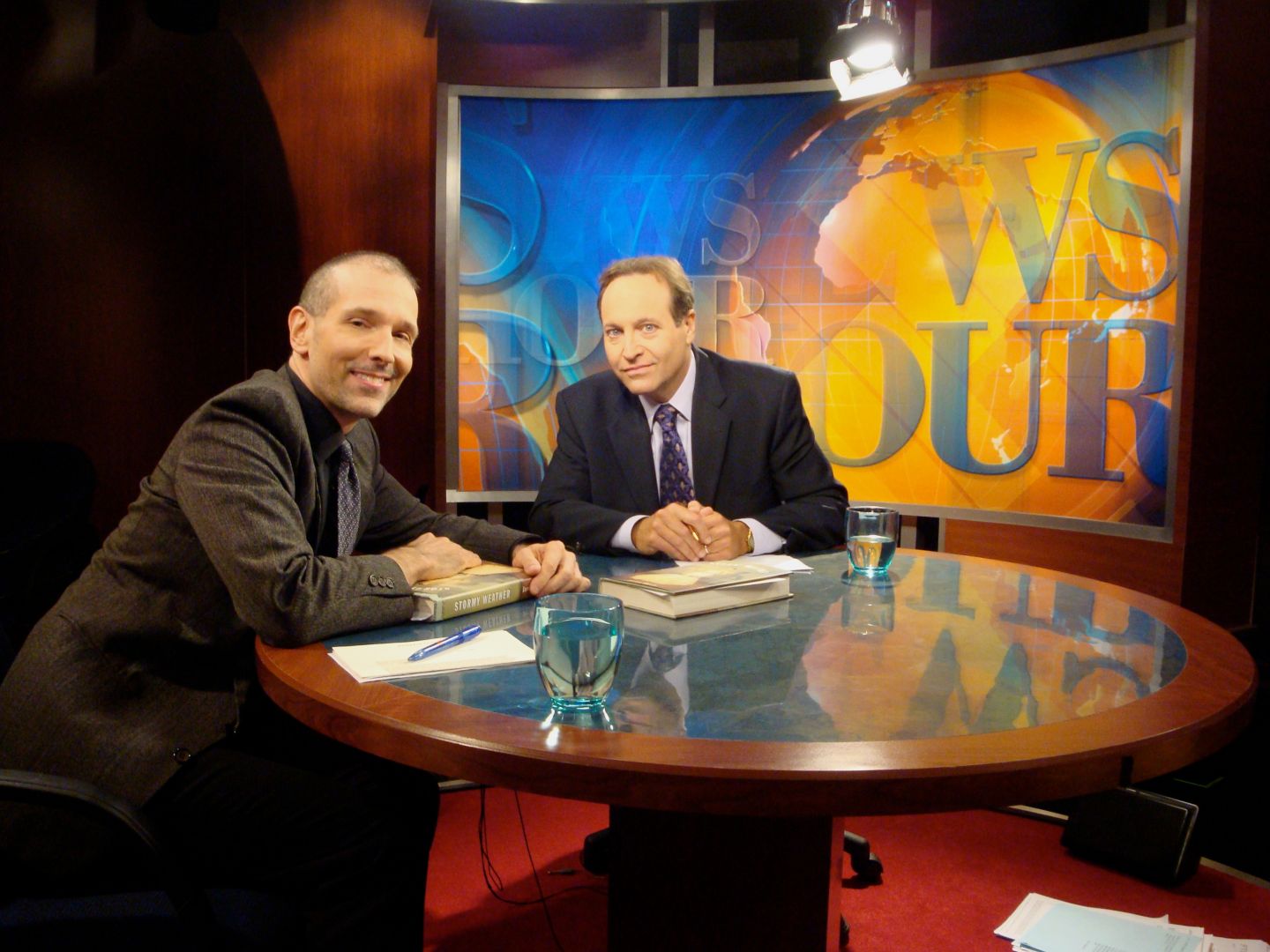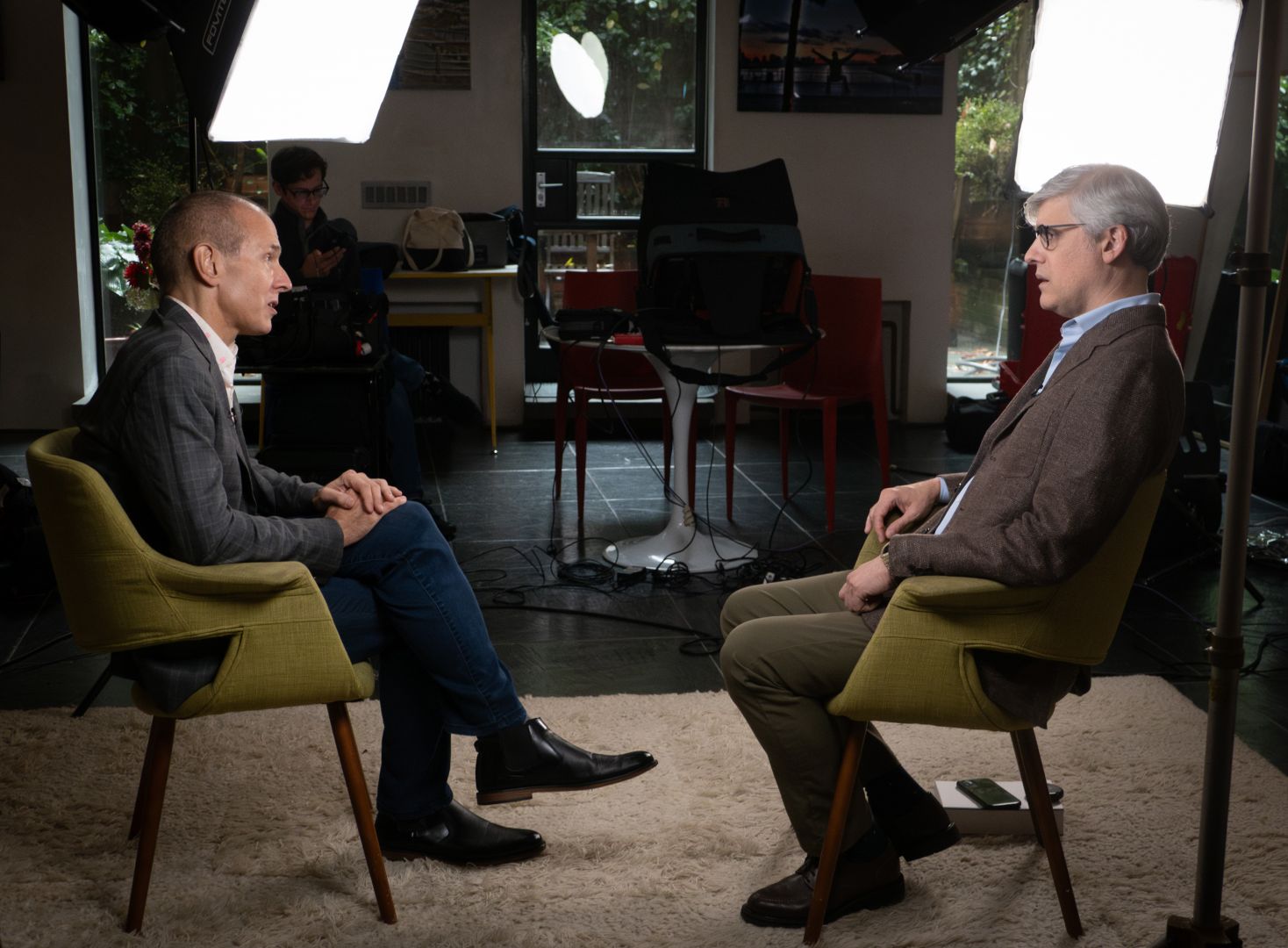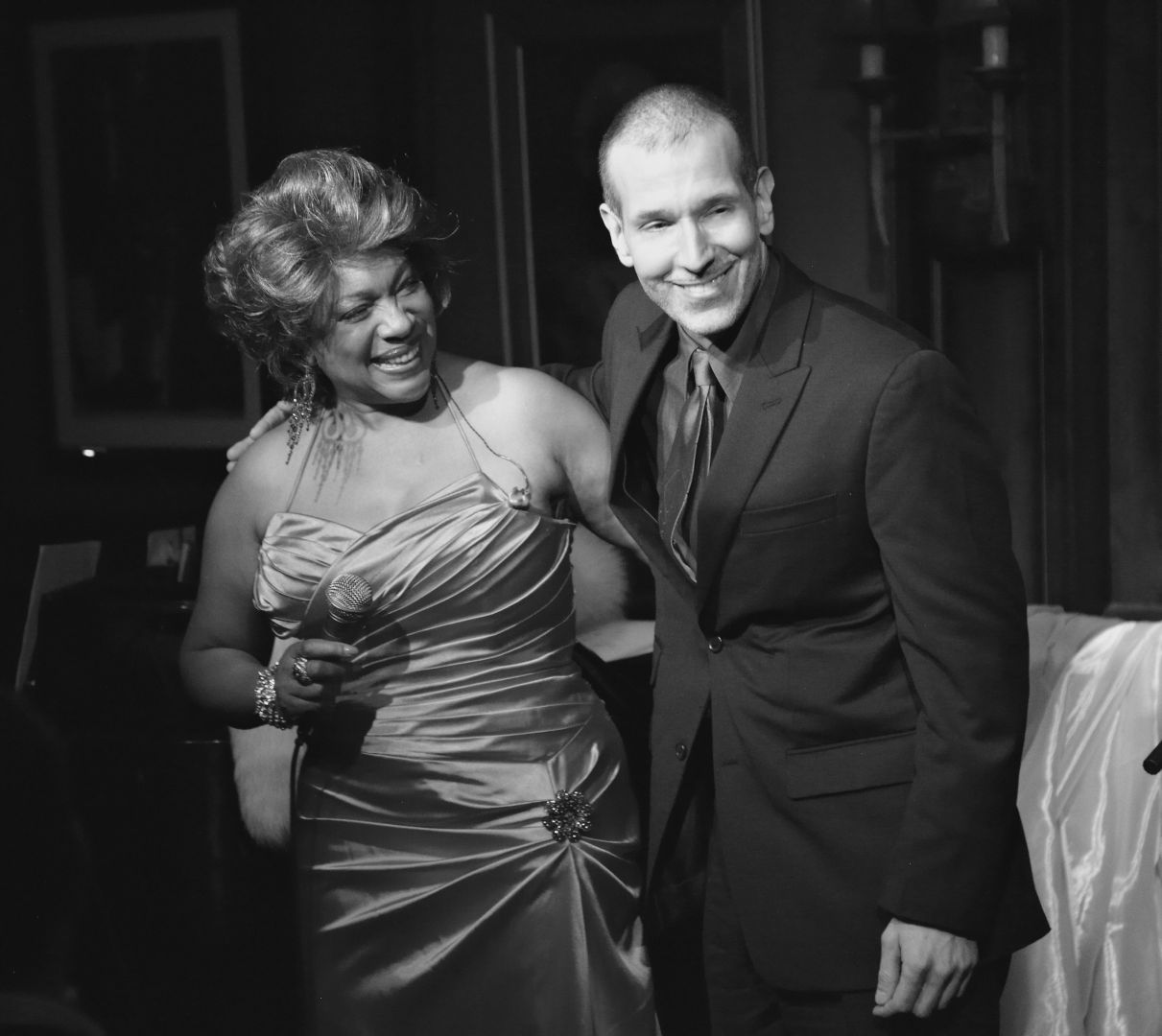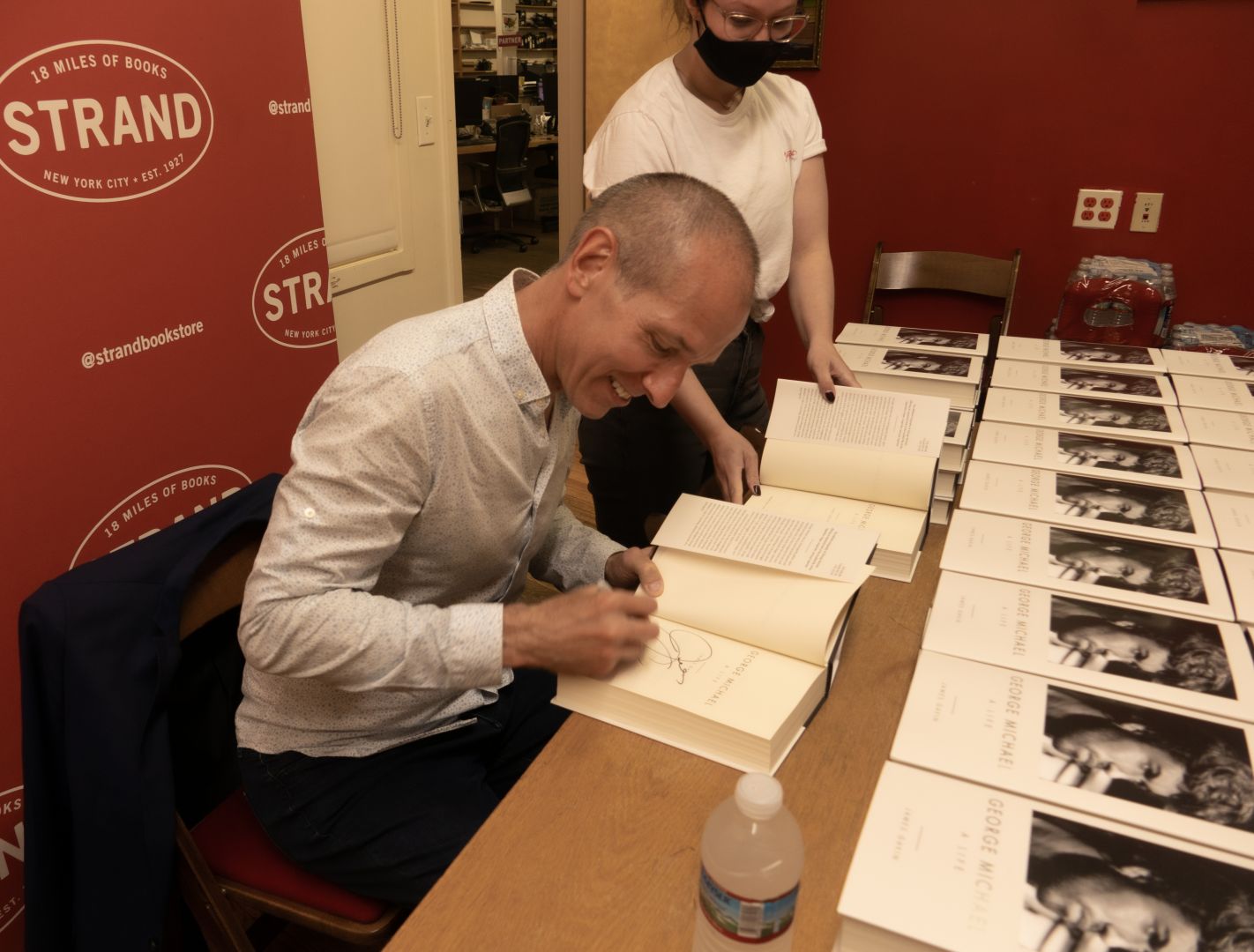Meet James Gavin | Music Journalist and Biographer

We had the good fortune of connecting with James Gavin and we’ve shared our conversation below.
Hi James, we’d love to hear about how you approach risk and risk-taking
Most people, in my opinion, take relatively safe and predetermined paths in life. They do what is expected of them. They graduate from college, choose a profession or let one choose them, marry, raise a family. They travel on business or go away during their two or three weeks of vacation time. Very often they merely tolerate their jobs, but they have children to support. “I work to live, I don’t live to work,” some of them say. They look forward to retirement. I hold this way of life in no scorn. It’s the foundation of society. But it is not the road I chose.
Whatever it was that implanted it in me, I had a burning desire, from the age of seven or eight, to fly free, no matter what it might cost. I had learned to read when I was four. I discovered singers at five. By the end of grade school I knew I had an affinity for writing. Books, libraries, and the music of the 1930s, ’40s, and ’50s became my obsessions; they got me through difficult times with my family and shone a light to an exciting future. I would not figure out the specifics for years; I only knew life was not worth living unless I could build it around these things I loved.
At Fordham University, I worked toward a gratifying but useless English degree. One day I told my writing professor, Verlyn Klinkenborg, that no one had ever written a book about all the intimate, sophisticated, talent-launching little clubs – better known as cabarets – that had once flourished in Manhattan, and wouldn’t it be nice if someone did? “Why don’t you?” he asked. That moment gave me my life. “Intimate Nights: The Golden Age of New York Cabaret” was published in 1991, then again in 1993, then again in 2006. I am now finishing my sixth book and planning my seventh. I have written hundreds of articles and won a few awards. I custom-designed the life I wanted and have taken continual kicks in the stomach in order to maintain it.
Risk-taking? I moved from Yonkers to New York right after college because I had to live there no matter what. I survived (barely) on part-time jobs in book and record stores (and a lot of Kraft Macaroni & Cheese, three boxes for a dollar) while I wrote “Intimate Nights” – a project I had undertaken on spec, with no agent, no publisher, and no track record besides articles in school newspapers. Once I got a deal with Grove-Weidenfeld (a small miracle and a fluke), I took a secretarial job to pay my rent. Two weeks before publication day I quit. I had no savings, no immediate prospects of making money, no knowledge of how the book would do. But I told myself I was either a writer or I wasn’t. At the end of 1992 that book won ASCAP’s Deems Taylor Award for excellence in writing about music. That gave me the courage I needed to keep going.
Thirty-three years later, I look back and wonder how I ever got through certain extremely rough times. The answer lies in a New York Times interview I did in 1999 with the subject of my current book project: a legendary jazz singer and former heroin addict, Anita O’Day, who at nearly 80 had rebounded from her latest, literally crippling near-death experience and was back in business. “You gotta have desire, man,” she told me. Desire and risk tend to go hand-in-hand. When the desire ebbs, we look for safety. I still skate on thin ice; it’s the price I pay for my glorious life of adventure and surprise.


Alright, so let’s move onto what keeps you busy professionally?
My first book got a surprising amount of attention, but what would I do next? I was making up this so-called career as I went along. One of the writers who gave my book a nice push was Stephen Holden of the New York Times. He interviewed me by phone, and that led to a long friendship. It was Stephen who opened a door for me at the Times, which published my first freelance article. I went on to write dozens more for the Times. I made an aggressive effort to establish myself as a freelance journalist – an uphill climb, because my favored subject matter, veteran pop and jazz singers, was not exactly hot copy. Ultimately I got into New York magazine, Time Out New York, NPR Music, Jazz Times, the Los Angeles Times, TV Guide, and countless other publications, while pursuing my true love, writing books. My second, a biography of the fabled, tragic jazz trumpeter and singer Chet Baker, was published by a gold-standard house, Knopf, and was widely translated into other languages; I’m proud of that. My next book, “Stormy Weather: The Life of Lena Horne,” made Oprah Winfrey’s Top 25 Summer Reads and earned me a nomination for an NAACP Image Award. A Vanity Fair feature I wrote about on Peggy Lee resulted in “Is That All There is?: The Strange Life of Peggy Lee,” published by Atria Books, a division of Simon & Schuster. Most recently I wrote “George Michael: A Life”; it’s been the most successful of all my books. People magazine named it as a Top-Ten Summer Read.
I live to tell honest stories about flawed, complicated, but exceptionally gifted artists who turn their adversities into art that moves me. As for how to promote this work, I’ve had to be resourceful. I created a touring show based on my Lena Horne book – a concert with onstage narration by me. Its star was Mary Wilson of the Supremes. We performed that show over 40 times, as far away as Australia. I have done a great deal of radio and a fair amount of TV, most recently CBS Sunday Morning.
In recent years I have turned my love of photography into an avocation. I love performance photography, and my pictures of shows have appeared in the New York Times, JazzTimes, People magazine, and elsewhere. I also do headshot and event photography. I am hoping to turn my picture-taking into a secondary livelihood.
Nobody said any of this would be easy; I have been rolling a boulder up a hill for well over 30 years. Seldom have I written about household-name commercial stars (George is the main exception). My tastes are snobbier than that. I’ve often had to fight to sell pitches, and I’ve been turned down a lot and ignored even more. But because I’m always working on a book, I haven’t had to exist, thank heaven, on freelance journalism. Living with no real security is a challenge. But as I see more and more people in corporate life getting laid off, I realize that security is an illusion.
I used to be a strong advocate of following one’s heart at all costs. Today I no longer preach that gospel. I have found that if you really burn to do something creative, if you can’t live without it – and the full-time creative life demands nothing less than 100% gut dedication – you will find a way. Advice, encouragement, etc. are nice, but in order to withstand the blows, as Anita O’Day said, you’ve gotta have desire. A lot of it.
Incidentally, I’ve drawn a lot of inspiration from a book by one of my favorite singers, Judy Collins, a beacon of positivity and determination. “Morning, Noon, and Night: Living the Creative Life” is one of my Bibles. I recommend it to your readers.

Let’s say your best friend was visiting the area and you wanted to show them the best time ever. Where would you take them? Give us a little itinerary – say it was a week long trip, where would you eat, drink, visit, hang out, etc.
Easy! My favorite place to hear music and hang out in Manhattan is Pangea (https://www.pangeanyc.com/), the city’s coolest cabaret – an intimate room in the back of a decades-old restaurant in the East Village (Second Avenue between 11th and 12th). Pangea hosts many of the coolest, most offbeat, risk-taking singers, comedians, and performance artists in New York, including Penny Arcade, Carol Lipnik, Dane Terry, David Mills, Joey Arias, David Cale, Steve Hayes, Flotilla De Barge, John Kelly, Rachelle Garniez, Raven O, Sidney Myer, Sheila Jordan, Tammy Faye, Zora Rasmussen. The room seats only about 60, so you feel as though you’re part of a discerning in-crowd, and you are. Bette Midler showed up recently to hear Zora, a friend of hers from the ’70s; after a show by singer-songwriter Stephan Said I had a long conversation with Debbie Harry in the front room. The hang after the shows is as much fun as the shows themselves.
Of course I love the Village Vanguard (https://villagevanguard.com/), the longest-surviving jazz club in the world, so far as I know, and one of the last remaining bastions of the Greenwich Village of old. It draws a wonderfully diverse crowd who listen to the music with rapt concentration. Birdland, in Times Square (https://www.birdlandjazz.com/), is a reliable good time – both in the main room, where the bigger names appear, and in the beautiful, smaller Birdland Theater down below. Both levels mix cabaret and Broadway with jazz. For lovers of standards, Birdland presents an early-bird show on Tuesday nights by pianist-singer Eric Comstock and his wife, singer Barbara Fasano. They have splendid taste and a smart, sophisticated air that is uniquely New York. Birdland has showcased them for years.
Recently I discovered The Sultan Room (https://thesultanroom.com/), the coolest music venue in Brooklyn, when I went to see Rogê, a samba-funk singer from Rio whom I wrote about in the New York and Los Angeles Times. The audience’s level of concentration was almost churchlike; it’s a serious listening room with the hippest panorama of happening music. Oh, and Free Fridays at MoMA are very much worth investigating: https://www.moma.org/calendar/programs/159.
I love healthy eating, and for this I often go to Westville, which has several locations in town, one in Hell’s Kitchen on 9th and 55th. For shopping, my passions are thrift stores; I strongly recommend Buffalo Exchange, Crossroads Trading, Unique Boutique (Columbus and 83rd), the East Village Thrift Store (on the same block as Pangea), and even the abundance of Goodwills all over the city. Little in life brings me more joy than shopping in used book and record stores. I just love looking through old, second-hand stuff! There are two shops known as Academy Records, one in the East Village and the other on 18th between 5th and 6th; I shudder (happily) to think of how much money I’ve spent at both. Westsider Books, a hole-in-the-wall used bookstore on Broadway and 80th, has sentimental meaning for me because I worked there while I was writing my first book.
During the pandemic, my daily salvation was Central Park, a block away from me on the Upper West Side. With the gyms closed, I began power-walking for an hour and a half a day in that gloriously energized and verdant setting, filled with joggers and bicycle-riders and families and athletes. Always I had taken Central Park for granted; now, for me, it holds an essential life force. On Sundays in the balmy months, Sheep Meadow is a bonanza of Speedo-wearing fitness mavens who socialize in large clusters.
My greatest advice for anyone who visits my town: Plant your feet on that ground and go walking with open eyes. Talk to people. Comb the city. New York is still the land of limitless possibilities, as long as you do your part and venture out.

Who else deserves some credit and recognition?
Just after I had begun writing my first book, whose subject I had not even fine-tuned – I only knew it would center on nightclub singers – I was at the Blue Note in New York to hear my favorite singer, the great Carmen McRae. Carmen had a very tough reputation. But with all the naivete and fearlessness of youth – I was 20 – I walked into her dressing room, introduced myself, and asked if I could interview her for a book I was writing about singers. To my delight, she said yes. The following night I sat in her dressing room between sets, doing what was only the third interview of my life. This woman who could be witheringly hard on people was funny, charming, candid. When it came time for her to go back downstairs I said, “Oh, Miss McRae, you’ve got to do your late set.” She said, “Well, if you didn’t get everything you wanted, come back tomorrow night.” And I did. As I left her dressing room for the second time, a man introduced himself. It was her manager, Kim Hartstein. When I told him what I’d been doing with Carmen he looked surprised. Later he told me she had just said no to People magazine and had told a reporter from Ebony to “f— off.” Kim suggested I send him a list of everyone I wanted to interview, and if he had their contact info he’d give it to me and I could use his name. So I look upon Carmen as my godmother, and Kim as my big brother.

Website: jamesgavin.com
Instagram: @JamesGavinBooks
Twitter: @JamesGavinBooks
Facebook: https://www.facebook.com/james.gavin/
Image Credits
Photo #2: Mary Wilson and James Gavin; photo by Wendy Jackson Photo #4: On Andy Cohen’s “Watch What Happens Live”; L-R: John Turturro, Paticia Arquette, JG, Ben Stiller, Adam Scott Photo #5: PBS NewsHour with host Jeffrey Brown Photo #6: With Mo Rocca, CBS Sunday Morning
